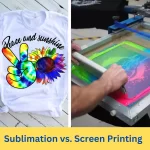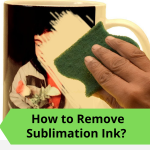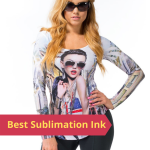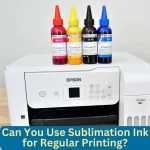When it comes to textile printing, the choice between pigment ink and sublimation ink can make a world of difference. These two types of inks have distinct properties that affect the quality and durability of your prints on shirts and other garments.
The main difference between pigment ink and sublimation ink lies in their application areas and printing process requirements. Pigment ink finds its place in a wide range of printing needs, including fabric and textile printing, fine art reproduction, and outdoor signage. Sublimation ink, on the other hand, is ideal for dye-sublimation printing on apparel, ceramic mugs, tumblers, personalized promotional items, soft signage, interior décor, etc.
Contents
- Understanding Pigment Ink
- Understanding Sublimation Ink
- Key Differences between Pigment Ink and Sublimation Ink
- Pigment Ink vs Sublimation Ink: Which is More Durable?
- T-shirt Printing: Sublimation vs Pigmented Inks – Choosing the Right Option
- Can I Use Pigment Ink for T-Shirt Printing?
- Can I Use Pigment Ink on Sublimation Paper?
- Dye Ink vs Pigment Ink vs Sublimation Ink
- Final Words: Pigment Ink vs Sublimation Ink
- Frequently Asked Questions
Understanding Pigment Ink
Pigment ink is a type of ink that is made up of tiny particles of pigment that are suspended in a liquid carrier. The pigment particles are what give the ink its color, and they are also what make it durable and long-lasting.
Pigment particles are much larger than dye particles, (which is another type of ink). This means that pigment particles cannot be absorbed into the material being printed on. Instead, they sit on top of the material.
How Pigment Ink Works
During the printing process, the printer deposits pigment ink onto the desired media through microscopic nozzles. As the ink settles, the liquid component evaporates, leaving behind the solid pigments.
The pigments bond with the surface of the media, creating vivid and durable prints with remarkable color accuracy.
Pigment ink can be used to print on a variety of materials, including paper, fabric, and plastic. However, it is most commonly used for printing on paper, as it produces durable, long-lasting prints that are resistant to fading and water damage.
Best of all, pigment ink can be used for screen printing and DTG (Direct-to-Garment) printing. Read about DTG vs. sublimation.
Pigment Ink Application Areas
Printing on Fabric and Textiles: Pigment ink is highly suitable for fabric and textiles printing, including cotton, silk, and polyester blends. The ink’s durability ensures that the prints maintain their color brilliance even after multiple washes.
Fine Art and Photography Reproduction: Artists and photographers appreciate pigment ink’s ability to reproduce intricate details, tonal gradations, and accurate color representation. The longevity of pigment ink prints makes them ideal for gallery exhibitions and archival purposes.
Graphic Design and Professional Printing: Pigment ink excels in graphic design projects, delivering sharp and vivid prints for marketing materials, brochures, and promotional items. Its wide color range and exceptional color accuracy ensure that the final prints match the designer’s intent.
Outdoor Signage and Banners: Pigment ink’s fade resistance makes it a reliable choice for outdoor signage and banners, which are exposed to harsh weather conditions and sunlight. The prints remain vibrant and eye-catching, maintaining their impact even after extended outdoor use.
Advantages of Using Pigment Ink
There are many advantages to using pigment ink, including:
- Pigment inks are very fade-resistant, so your prints will look great for years to come.
- These inks are also very long-lasting even if they are exposed to the sun and harsh weather conditions.
- Pigment inks can be used to print on a variety of materials, including paper, fabric, and plastic.
- This type of ink has rich saturation, so your prints will look bold and vibrant.
Challenges with Pigment Ink
While pigment ink has many advantages, there are also a few challenges associated with its use, including:
- Pigment particles can be larger than dye particles, which can lead to clogging issues in printer heads. This is especially true if the printer is not used regularly.
- This type of ink does not have a wide color range as compared to other inks.
- Since the pigment inks are liquid based, they can take longer to dry than some other types of inks.
Understanding Sublimation Ink
Sublimation ink is a specialized ink formulated with dyes that have the ability to transform from a solid to a gas without passing through the liquid phase.
The ink contains sublimation dyes dissolved in a liquid solvent. When heat and pressure are applied during the printing process, the solid dye particles are melted by the heat and then diffuse into the substrate, creating a permanent and long-lasting print.
Is Sublimation Ink Water Based? Yes, sublimation ink is typically water-based. The liquid solvent in sublimation ink is primarily composed of water, making it an environmentally friendly option for printing.
How Sublimation Ink Works
Sublimation ink relies on a process called “dye-sublimation”, where heat converts the solid dye particles into gas. The gas molecules penetrate the fibers of the substrate, forming a permanent bond.
As the ink cools, the gas reverts to a solid state, permanently infusing the colors into the material. The colors become a part of the material, resulting in prints that are resistant to fading, cracking, and peeling.
Sublimation Ink Application Areas
Dye-Sublimation Printing for Apparel and Sportswear: Sublimation ink is widely used in the textile industry for printing vibrant and custom designs on sports apparel and fashion garments.
Customized Promotional Items: Sublimation ink opens up exciting possibilities for creating customized promotional items such as mugs, phone cases, and keychains.
Soft Signage and Exhibition Graphics: Sublimation ink is favored in the production of soft signage and exhibition graphics due to its ability to deliver stunning, high-resolution prints on polyester-based materials. The prints offer exceptional color vibrancy and durability, making them ideal for trade shows, events, and retail displays.
Interior Decor and Personalized Gifts: Sublimation ink enables the creation of personalized interior decor items and gifts. From vibrant wall art and decorative pillows to customized mugs and photo panels, sublimation ink brings life and color to various home decor and gift items.
Advantages of Using Sublimation Ink
There are many advantages to using sublimation ink, including:
- Sublimation ink produces vibrant and long-lasting colors that are resistant to fading and washing.
- Sublimation ink can be used to print on a variety of polyester-based materials, including apparel, sportswear, mugs, phone cases, metal tumblers, wood, and more.
- This ink is best to print photos on your favorite items.
Challenges with Sublimation Ink
While sublimation ink has many advantages, there are also a few challenges associated with its use, including:
- Sublimation ink is only compatible with polyester-based substrates. This means that it cannot be used to print on cotton, paper, or other non-polyester materials, or it requires additional steps to make these materials ready for sublimation.
- Sublimation ink requires specialized equipment and a heat transfer process to create prints. This can make it more difficult and expensive to use sublimation ink than other types of ink.
- The worst part is, sublimation ink cannot produce true black and white prints. The black ink will always have a slight tint of another color, such as blue or gray.
Here are the best sublimation inks of 2023.
Key Differences between Pigment Ink and Sublimation Ink
Understanding the key differences between pigment ink and sublimation ink is crucial for making informed decisions when it comes to choosing the right ink for your printing needs. Let’s dive into the differences that set them apart.
Color Permanence and Longevity
Pigment ink is more fade-resistant than sublimation ink. This means pigment ink takes the crown when it comes to long-lasting prints that resist fading. The solid particles of pigment ink adhere to the media surface, providing excellent color permanence over time.
On the other hand, while sublimation ink offers vibrant colors, it may experience slight fading over extended periods due to the nature of dye-sublimation printing.
Media Compatibility and Application Range
Pigment ink boasts exceptional compatibility with various media types. Whether you are printing on fabric, fine art papers, or creating outdoor signage, pigment ink delivers reliable and consistent results.
On the other hand, sublimation ink thrives when it comes to polyester-based materials. It integrates seamlessly with polyester fabrics, making it the go-to choice for apparel printing.
Color Range and Vibrancy
Sublimation ink can produce a wider range of colors than pigment ink. This is because sublimation ink is made up of dye particles, which can be more easily manipulated to create different colors. However, pigment ink can produce more vibrant colors than sublimation ink.
Ease of Use and Printing Process
Pigment ink offers simplicity and convenience in the printing process. It can be used with a wide range of inkjet printers, making it accessible for both professional and amateur printers.
Sublimation ink, however, requires specialized equipment and a heat transfer process. This means investing in a sublimation printer and heat press, which may not be suitable for all printing setups.
Read the difference between sublimation printer and inkjet printer.
Cost Considerations and Economic Factors
Pigment ink is generally more cost-effective than sublimation ink. Pigment ink cartridges tend to have a longer lifespan, requiring fewer replacements. Additionally, the wide availability of pigment ink and its compatibility with a range of printers contribute to its affordability.
Sublimation ink, on the other hand, requires dedicated sublimation printers and specific materials, which can be more expensive upfront.
Usage of Printers
Pigment ink is predominantly used in inkjet printers, which are widely available and versatile. These printers utilize a printhead that precisely deposits the pigment ink onto the media.
In contrast, sublimation ink requires dedicated sublimation printers that are specifically designed to accommodate the heat transfer process necessary for sublimation printing.
Read the difference between sublimation and heat transfer.
Pigment Ink vs Sublimation Ink: Which is More Durable?
Well, I’ve noticed that several factors influence ink durability of pigment ink and sublimation ink. Let’s explore them:
In a comparative analysis, pigment ink tends to offer higher durability. Its solid particles provide excellent resistance to fading, making it suitable for long-lasting prints. Pigment ink is often used in applications that require prints to withstand environmental conditions, such as outdoor signage and banners.
On the other hand, sublimation ink, while vibrant and long-lasting on polyester-based materials, may have slightly lower durability compared to pigment ink. It is more prone to fading over time, especially when exposed to prolonged sunlight or harsh outdoor conditions.
To further illustrate the durability of pigment ink and sublimation ink, let’s consider real-world scenarios and usage examples. In high-traffic environments where prints are subjected to constant exposure, such as outdoor signage or apparel, pigment ink’s fade resistance proves advantageous.
Its ability to withstand harsh weather conditions and UV exposure ensures that the prints retain their vibrancy and integrity over time.
On the other hand, sublimation ink excels in applications like customized mugs or phone cases, where the prints are not directly exposed to external elements. The vibrant colors achieved with sublimation ink offer longevity under regular usage conditions.
T-shirt Printing: Sublimation vs Pigmented Inks – Choosing the Right Option
When it comes to printing designs on t-shirts, selecting the right ink is essential to achieve vibrant results. The debate between sublimation ink and pigment ink often arises, leaving many wondering which option to choose.
I personally prefer sublimation over any other textile printing method (I’ve mentioned this in other posts too).
Let’s explore the characteristics of these inks and determine the best choice for t-shirt printing.
Choosing the Right Ink for T-shirt Printing
When deciding between sublimation ink and pigment ink for t-shirt printing, consider the following factors:
a. Fabric Type
Sublimation ink is most suitable for polyester-based fabrics. If you primarily work with polyester t-shirts, sublimation ink is the ideal choice, as it seamlessly integrates with the fabric and ensures vibrant and long-lasting prints.
However, if you work with a variety of fabric types, including cotton or blends, pigment ink would be a better choice.
b. Design Complexity
Pigment ink can produce sharp and vibrant designs, making it suitable for various t-shirt printing applications, including graphic design, fine art, and personalized prints.
The solid particles in pigment ink provide exceptional color accuracy and sharpness, allowing for intricate designs to be printed with precision.
c. Quantity and Production Speed
Sublimation ink is known for its efficiency in high-volume production. The heat transfer process allows for quick and consistent printing, making it an excellent choice for large quantities of t-shirts.
Pigment ink, although versatile, may require more time for printing and drying, making it more suitable for smaller batches or custom one-off designs.
Can I Use Pigment Ink for T-Shirt Printing?
Yes, you can use pigment ink for t-shirt printing and achieve excellent results. In fact, I have personally used pigment ink for t-shirt printing and found it to be a reliable and versatile option.
Pigment ink offers exceptional color accuracy and durability, making it suitable for a variety of fabric types, including cotton, polyester, and blends. You can use screen printing on DTG to print on fabric using pigment ink.
Using pigment ink for t-shirt printing allows you to create vibrant designs with sharp details. The solid particles in pigment ink sit on the surface of the fabric, creating a strong bond that resists fading and maintains the integrity of the print even after multiple washes.
However, do not forget the proper curing step, such as heat setting or using a heat press, are crucial when using pigment ink for t-shirt printing. This helps to ensure the longevity and washability of the prints.
Can I Use Pigment Ink on Sublimation Paper?
While it is technically possible to use pigment ink on sublimation paper, it is not recommended as it can lead to unsatisfactory results. Sublimation paper is specifically designed to work in conjunction with sublimation ink.
Pigment ink is compatible with a wide range of media, including various types of paper. While sublimation paper is typically used with sublimation ink for the dye-sublimation process, you can still use pigment ink as an alternative on sublimation paper.
DURABrite Ultra pigment ink works great with Epson EcoTank printers, and can be used to print on sublimation paper.
However, pigment ink on sublimation paper will not yield the same results as using sublimation ink.
Dye Ink vs Pigment Ink vs Sublimation Ink
Here is a comparison table between dye ink, pigment ink, and sublimation ink:
| Feature | Dye Ink | Pigment Ink | Sublimation Ink |
| Composition | Dye molecules suspended in a liquid carrier | Small particles of pigment suspended in a liquid carrier | Dye molecules suspended in a liquid carrier |
| Durability | Moderate fade resistance, may fade over time | Excellent fade resistance, long-lasting prints | Good fade resistance on polyester-based materials |
| Color Vibrancy | High color vibrancy and saturation | Rich color gamut and saturation | Vibrant colors on polyester materials, may have limited vibrancy on other substrates |
| Water resistance | Not water-resistant | Water-resistant | Water-resistant |
| Substrates | Can be used on a variety of substrates, including paper, fabric, and plastic | Can be used on a variety of substrates, including paper, canvas, and wood | Can only be used on polyester and other heat-activated substrates |
| Printing process | Can be used with any type of printer | Can only be used with inkjet printers | Can only be used with sublimation printers |
| Special Considerations | Prone to color bleeding, may require | Requires specialized media for optimal | Requires specific equipment and heat press |
| Cost | More affordable than pigment ink | More expensive than dye ink | More expensive than dye and pigment inks |
Final Words: Pigment Ink vs Sublimation Ink
So, as we have seen there are significant differences between pigment ink and sublimation ink, but the choice comes down to the printing needs. If your main purpose is to print on polyester fabric or other polyester based items, sublimation ink would be the best option for bright results.
On the other hand, if you are going to run a textile printing business where you are going to deal with multiple types of fabrics, such as cotton, silk, polyester, and blends, pigment ink will be a better option.
Frequently Asked Questions
Which is better pigment ink or sublimation ink?
Pigment ink and sublimation ink are both good inks, but they have different strengths and weaknesses. Pigment ink is more durable and water-resistant, while sublimation ink produces brighter, more vibrant colors. Ultimately, the best type of ink for you will depend on your specific needs and the application you are using it for.
Can you use pigment ink for sublimation?
No, you cannot use pigment ink for sublimation. Sublimation ink is specifically designed to sublimate, or turn into a gas, when heated. Pigment ink will not sublimate and will instead remain on the surface of the substrate, resulting in a dull, faded image.
What is pigment ink good for?
Pigment ink is excellent for printing on paper, canvas, and other non-porous surfaces that are exposed to extreme sunlight and harsh weather conditions. It is commonly used for archival prints, fine art reproduction, and professional graphics.
Can I use pigment ink on heat transfer paper?
Yes, you can use pigment ink on heat transfer paper. However, the results may not be as good as if you used sublimation ink. Pigment ink will not sublimate, so the image will not be as bright or vibrant. Additionally, pigment ink may not be as water-resistant as sublimation ink, so the image may fade over time if it is exposed to moisture.
Can I use pigment ink in a printer that is designed for sublimation ink?
No, it is not recommended to use pigment ink in a printer designed for sublimation ink. Sublimation printers are specifically engineered to accommodate the unique characteristics of sublimation ink, including the heat transfer process.
Using pigment ink in a printer that is designed for sublimation ink can also damage the printer. The printer’s printhead is designed to work with sublimation ink, which has a different viscosity than pigment ink. Using pigment ink can clog the printhead and cause it to malfunction.
- 5 Best 13×19 Sublimation Printer for Wide Format Substrates - December 27, 2023
- Best 11×17 Sublimation Printer to Print Tabloid Size Paper - December 26, 2023
- Epson ET-8550 vs ET-15000: Best Wide-Format EcoTank Printer - December 25, 2023

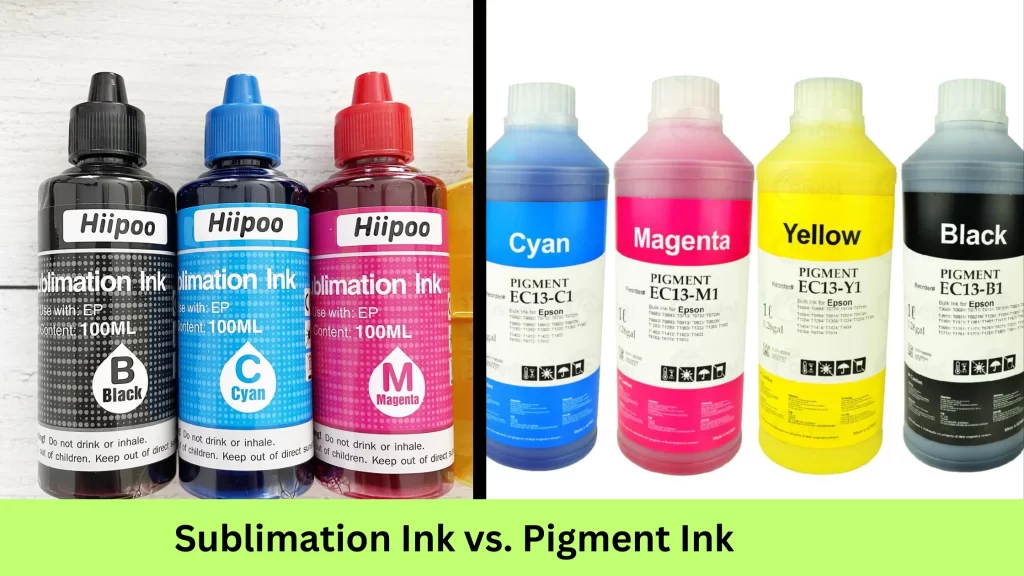
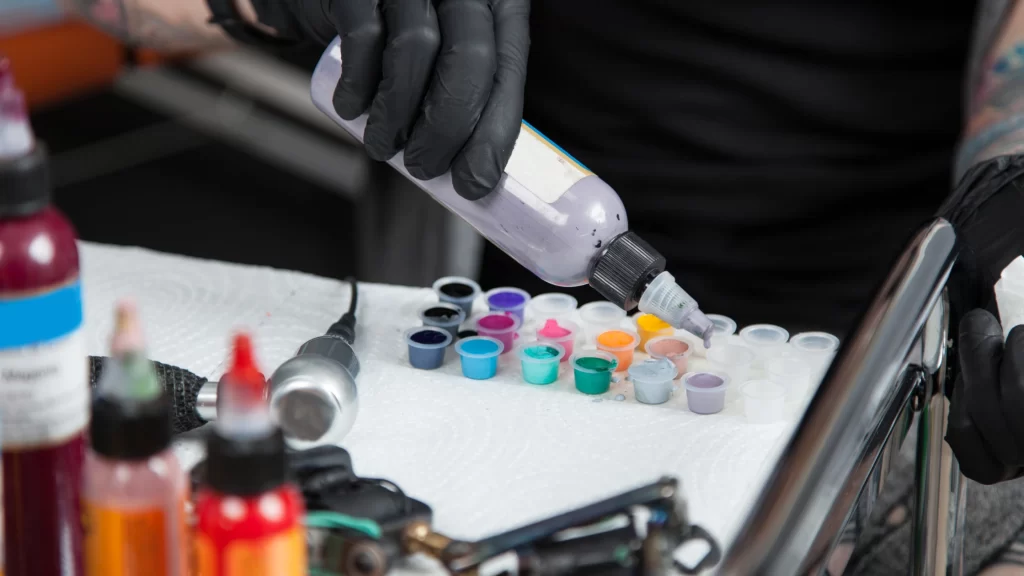
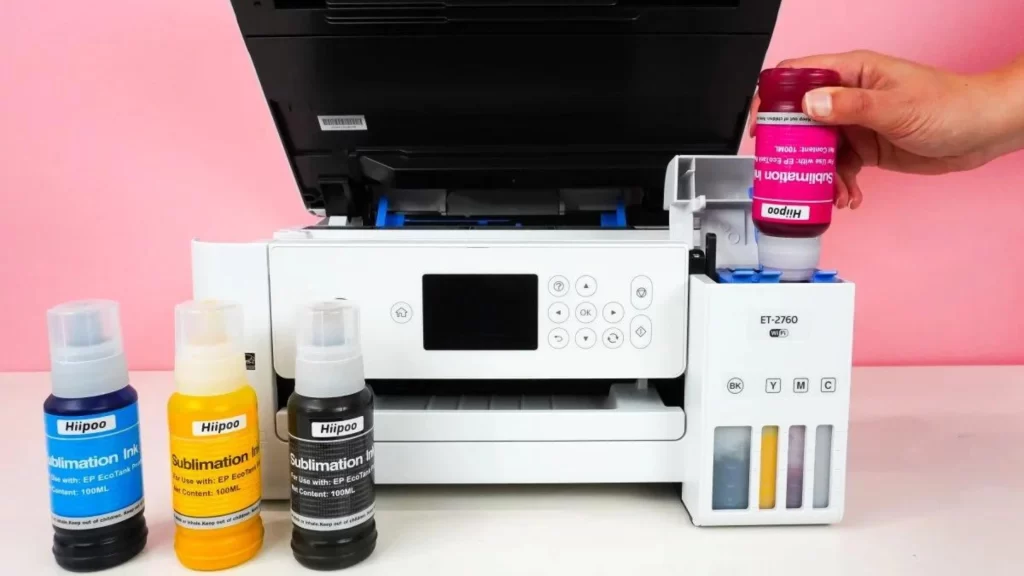


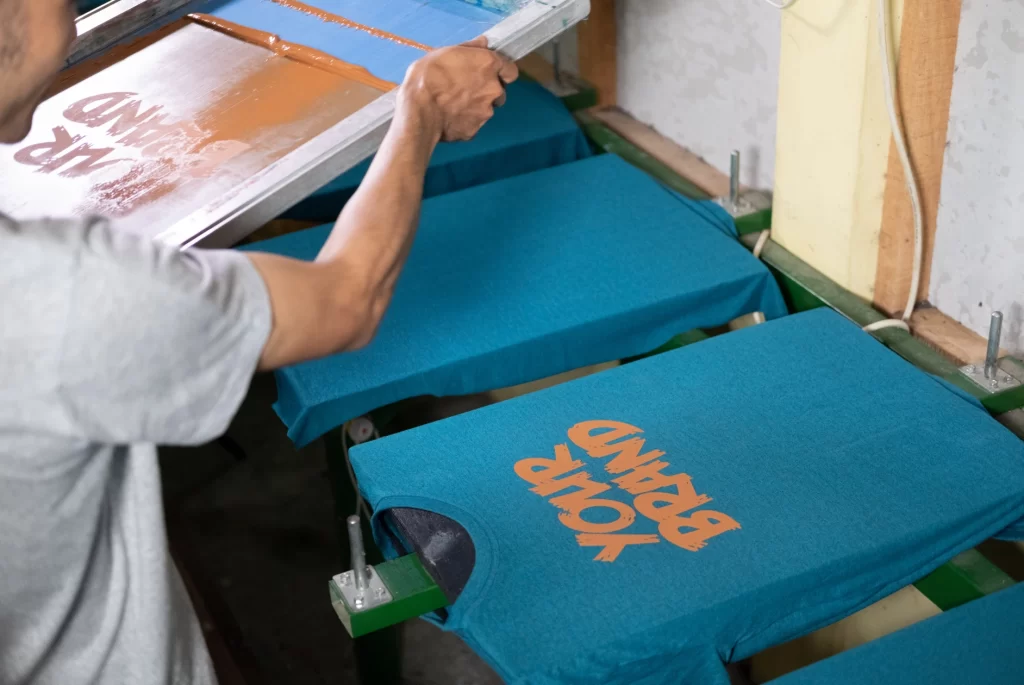

![What Is Sublimation Ink and How Does It Work? [Read Its Uses] What Is Sublimation Ink](https://subliprinting.com/wp-content/uploads/2022/04/What-is-sublimation-ink-150x150.png)
